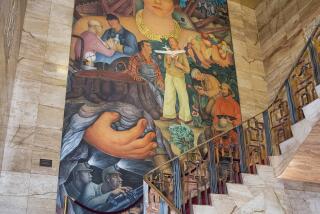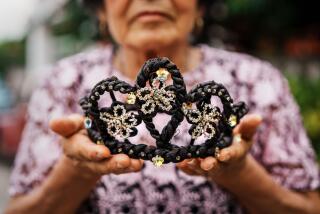Extremadura, where Spain’s conquistadors called home
I was standing in a tourist information office in Cáceres when a British woman asked whether I knew about the town’s connection to Montezuma, the mighty Aztec leader who was defeated by Hernando Cortés and the conquistadors.
When I said I didn’t, she told me Montezuma’s daughter had married a conquistador and they settled in Cáceres.
You could have knocked me over with a few slices of the fabulous ham my husband, Paul, and I had been eating by the kilo since we arrived in Extremadura in western Spain. I asked every person who worked in the tourist office, and no one had ever heard the Aztec-Cáceres story. Being blessed, or cursed, with an insatiably curious mind, I set off to find whether the British woman’s information was true.
Planning your trip
Fly to Madrid, rent a car at the airport, and it’s less than a three-hour drive along the A5 motorway.
Part of the charm of the area is that it has not been written about extensively on the Web or in guidebooks. Here are a few sites that will help you plan a trip.
For general information about the region: www.spain.info
For info about Cáceres: www.euroresidentes.com/euroresiuk/guides-spain/guide-to-caceres.htm
For info about Trujillo: www.wapedia.mobi/en/Trujillo,_Cáceres?t=4.
While Paul was busy snapping photos of Cáceres, a medieval and Renaissance town founded in 1477, I trekked up and down the narrow cobbled streets, past massive, monumental stone and brick edifices, towers, parapets and Romanesque arches, asking every local I met about Montezuma’s offspring. I got polite, blank stares.
Then I hit pay dirt: A small sign pointed to the archives housed in the elegant, stone Palacio de Moctezuma (an alternate spelling for the Aztec emperor).
The only part of the palace open to visitors was the patio, or stately interior courtyard, and the office of the archives. I bolted in to the latter, asking the man in charge if he could inform me about the history of Montezuma’s daughter. He looked at me quizzically, probably thinking I had imbibed too much of the region’s much-touted wine, then handed me a phone book-thick archival book. “Look through it yourself, señora,” he said. I glanced at page after page of impenetrable entries, sighed, and left.
Paul was standing outside, visibly excited. He pointed to a plaque on the wall. It announced that the 16th century building was constructed by Juan de Toledo Montezuma (a descendant of Juan Cano de Saavedra and Isabel de Montezuma, daughter of the emperor) and Doña Mariana de Carvajal y Toledo. They were married and lived in the palace.
So, it seemed, that Princess Isabel Montezuma and conquistador Juan Cano had a son, but many questions remained. Was it a love match? The conquistador was sacking the empire, so how did they meet? Was this passion or political pressure? Their son married Doña Mariana -- thus blending Aztec and Spanish bloodlines, and the two constructed a costly palace in Cáceres. What mother-in-law (Isabela) wouldn’t want to come for a visit?
By happenstance, I ran into the British woman again and told her what we had discovered. She smiles and said, “If you’re interested in conquistadors and their women, you have to go to Trujillo, about 28 miles east of Cáceres. Its nickname is ‘Cradle of the Conquistadors.’ ”
So we set out for the cradle, which has rocked for more than 2,500 years and was a hilltop fortress in the Middle Ages. In the center of the vast main square, called the Plaza Mayor, is a huge equestrian statue of Francisco Pizarro, Trujillo’s most famous, or infamous, son. With about 200 soldiers, he captured Atahualpa, the Inca ruler of what is now Peru, and had Atahuallpa killed. Pizarro, in turn, was killed by his Spanish enemies.
While visiting Pizarro’s hometown, I learned that his birth was not recorded, but it’s estimated that he came into this world between 1471 and 1478. Local legends claim he was either abandoned as an infant on the steps of a Trujillo church or raised with swine and suckled by a pig. Historians claim that, local color aside, Francisco’s father was a military man and his mother was probably a servant. They never wed.
Whatever his origins, Pizarro probably worked as a swineherd, and escaped the grinding poverty of Extremadura by joining the army and nursing dreams of becoming fabulously wealthy. Francisco had a gaggle of sisters and brothers, some of whom were involved in the conquest of Peru.
In the warren of today’s gorgeously preserved medieval streets beyond the main plaza, rats, trash and open sewers greeted Pizarro every day of his young life. I stood in front of the stone house where he was born; a coat of arms with two pigs is carved over the door.
Pizarro was not the only conquistador to hail from Trujillo. The town also claims Francisco de Orellana, the first explorer of the Amazon, and Diego García de Paredes, who was known as the Samson of Extremadura because he took on whole armies with his mighty sword. The graceful, multistoried stone Palacio de la Conquista on the Plaza Mayor, with its escutcheons, balconies and interior walkways, was built by half-brother Hernando Pizarro. A brochure provided by the local tourism office claims he married Francisco’s half-Inca daughter and settled here.
I loved visiting the old castle, churches and palaces in Trujillo and wandering the cobblestone streets, but I was happy to sit down for a sumptuous family-style lunch at La Troya restaurant on the Plaza Mayor to contemplate why we had never learned about the conquistadors’ romantic connections.
More to Read
Sign up for The Wild
We’ll help you find the best places to hike, bike and run, as well as the perfect silent spots for meditation and yoga.
You may occasionally receive promotional content from the Los Angeles Times.






